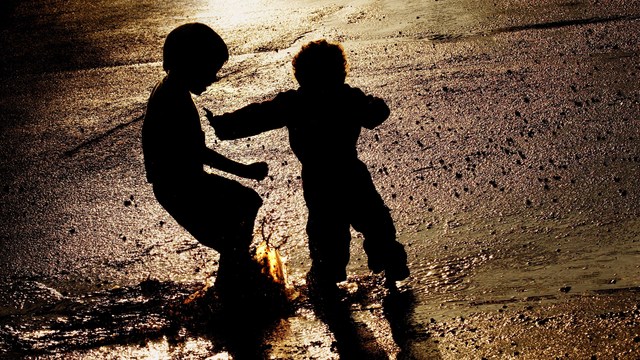 Design Pics/PhotoSpin
Design Pics/PhotoSpin
April is Autism Awareness Month.
Definition of Bullying
For years bullying has been dismissed as a normal, school-age, playground experience. We’ve used phrases like "Boys will be boys," "What doesn’t kill you makes you stronger," and "Kids are cruel." The reality is that bullying isn’t harmless. “Every day, 160,000 children do not go to school because they are afraid of being bullied.” (2)
The Department for Children, Schools and Families in the U.K. defines the following actions as bullying:
• Hitting
• Kicking
• Taking belongings
• Name-calling
• Making insulting or offensive remarks
• Spreading nasty stories about someone
• Excluding from social groups
• Making a person the subject of malicious rumors
• Sending malicious emails or text messages (3)
Actions are considered bullying when they’ve been deliberately hurtful, repeated over a period of time, and make it difficult for victims to defend themselves.
Bullying and Autism
The Interactive Autism Network engaged in a survey in the fall of 2011 of families with children on the autism spectrum to investigate the frequency at which children with ASD were bullied because of their disabilities.
The preliminary findings of this survey indicate “that children with ASD are bullied at a very high rate, and are also often intentionally ‘triggered’ into meltdowns or aggressive outbursts by ill-intentioned peers.” (1)
To summarize some of the preliminary findings in the IAN survey (1):
• 63 percent of children aged 6 to 15 years with ASD were reported to have been bullied, compared to 12 percent of their neurotypical siblings.
• 73 percent of those bullied reported being teased, picked on, or made fun of, 51 percent reported being ignored or left out of things on purpose’, 47 percent reported being called names.
• Nearly 30 percent of children who had been bullied had been pushed, shoved, hit, slapped or kicked.
• 53 percent had been provoked into fighting back or having a meltdown.
• Bullying occurred at every grade level, with the worst time between grade 5 and 8.
• 43 percent of ASD children who attend regular public schools report being bullied.
• 61 percent of children with Asperger’s syndrome (AS) reported being bullied, “compared with 28 percent of those with autism and 37 percent of those with Other ASDs.”
It is generally accepted that this 61 percent is probably higher because there are children who are unable to verbalize that they’re being bullied, or may not even realize they’re being bullied because they are unable recognize when someone’s being mean to them.
More investigation needs to be done to confirm this hypothesis , but researchers believe that children with Asperger’s syndrome are in typical classroom settings in regular public schools, because they’re high performing.
Children with Asperger’s appear more “normal” than children with other ASDs, and classmates perhaps forget that AS children “share the same problems with social understanding as others on the autism spectrum”—this makes them ‘perfect targets’.” (1)
Interestingly, children with more repetitive behaviors, like flapping or spinning, were less likely to be bullied. Perhaps it’s because these children had more severe autism and were more sheltered in terms of school environments, or because these more outward signs made their disability more noticeable and children less likely to pick on them.
Behavior traits that were associated with an increased likelihood of being bullied included:
• Clumsiness
• Poor personal and oral hygiene
• Rigid rule keeping
• Continuing to talk about a favorite topic even when others are bored or annoyed
• Frequent meltdowns
• Inflexibility or rigidity (1)
The Effects of Bullying and Getting Involved
“Bullying is not a harmless rite of childhood that everyone experiences. Research shows that bullying can negatively impact a child’s access to education and lead to:
• School avoidance and higher rates of absenteeism
• Decrease in grades
• Inability to concentrate
• Loss of interest in academic achievement
• Increase in dropout rates.” (4)
“Parents, educators, and other adults are the most important advocates that a student with disabilities can have.” (3) It is important that all involved adults learn and know how to communicate effectively with children with autism, and never expect the child to fix the problem.
These are children who, by their very nature, cannot read social cues, don’t know the “unwritten rules or hidden curriculum” that govern the classroom, playground and even bathrooms.
(See more on The Hidden Curriculum here.)
So we need to intervene and be aware of the uniqueness of autism, particularly Asperger’s syndrome, and how that affects “ordinary” childhood interactions.
Sources:
1. IAN Research Report: Bullying and Children with ASD. Anderson, Connie, Ph.D. Interactive Autism Network. Web. Apr 10, 2013.
http://www.iancommunity.org/cs/ian_research_reports/ian_research_report_bullying
2. Asperger syndrome and bullying. Heinrichs, Rebekah, M.S.N., M.S. Ed. Autism Support Network. Web. Apr 10, 2013.
http://www.autismsupportnetwork.com/news/asperger-syndrome-and-bullying-998073
3. Bullying: a guide for parents. The National Autistic Society. Web. Apr 10, 2013.
http://www.autism.org.uk/bullying
4. Bullying & Harassment of Children with Special Needs: Top Ten Facts Parents, Educators and Students need to know. National Bullying Prevention Center. Web. Apr 10, 2013.
http://specialneeds.thebullyproject.com/top_10
Reviewed April 10, 2013
by Michele Blacksberg RN
Edited by Jody Smith
Tags:
Keywords:






Add a CommentComments
There are no comments yet. Be the first one and get the conversation started!